Navigating the world of hydraulic fittings can be complex, with numerous standards and designs available. Among the most common are JIC (Joint Industry Council) and NPT (National Pipe Taper) fittings, both serving to connect components in fluid power systems. While they may appear similar at first glance, their distinct sealing mechanisms and applications make them fundamentally different and not interchangeable.
Understanding the core differences between JIC and NPT fittings is crucial for engineers, technicians, and anyone involved in hydraulic system design, maintenance, or repair. Choosing the wrong fitting can lead to dangerous leaks, system inefficiency, and premature component failure, highlighting the importance of precise selection.
What are JIC Hydrualic Fittings?
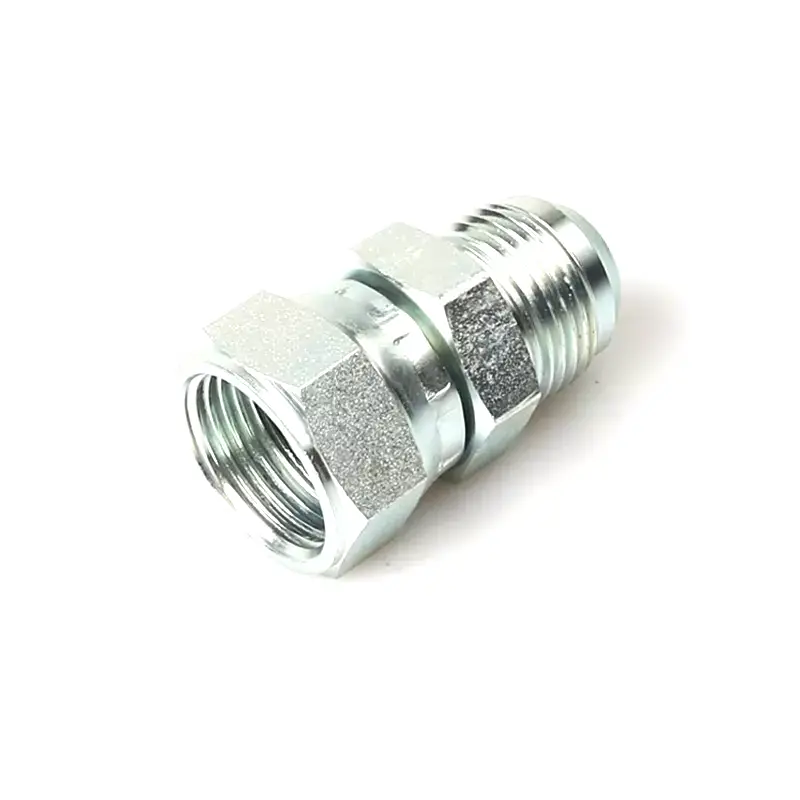
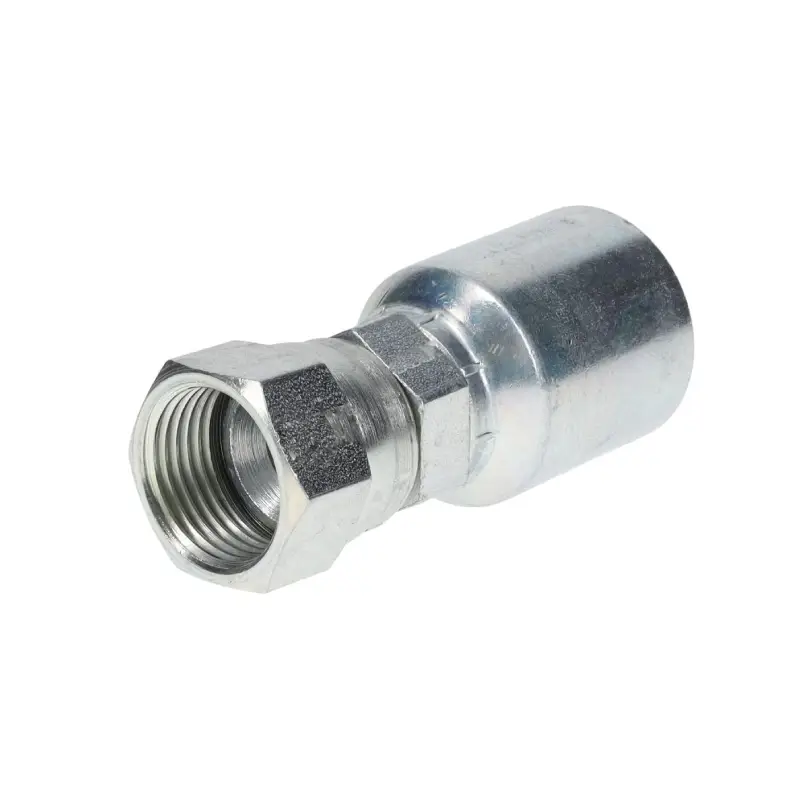
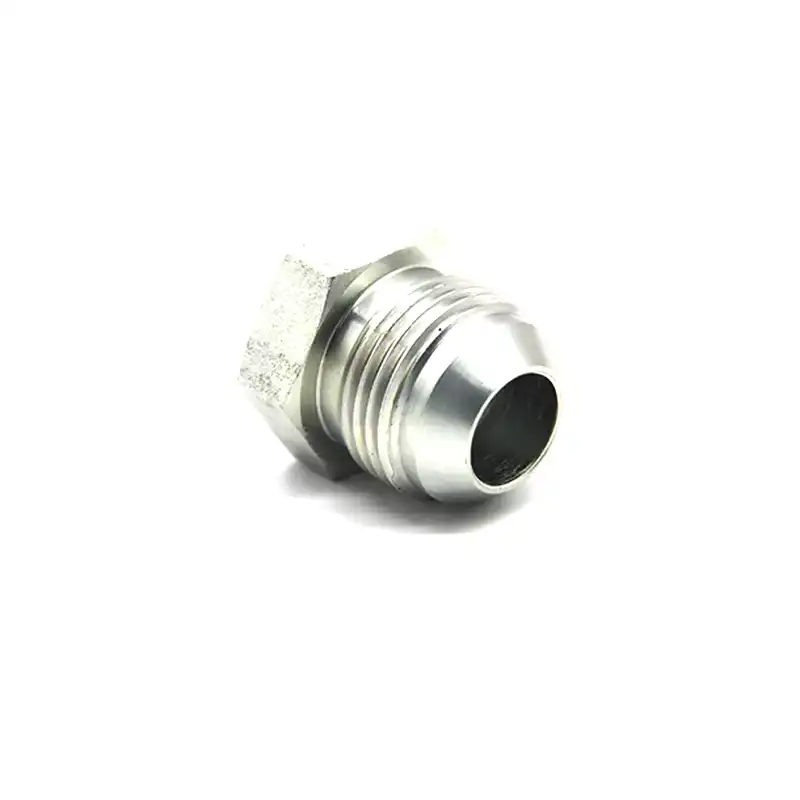
JIC (Joint Industry Council) hydraulic fittings are a widely used type of flare fitting, particularly prevalent in North America and often found in industrial and fluid power applications. Defined by SAE J514 standards, they are characterized by a 37-degree flare seating surface on both the male and female components.
The seal in a JIC connection is created through a metal-to-metal contact between the finished surface of the male fitting’s nose and the inside of the flared tubing or female fitting, rather than relying on an O-ring or tapered threads. This design provides a robust, leak-resistant connection suitable for high-pressure hydraulic systems and offers the advantage of being reusable and easily disconnected for maintenance.
What are NPT Hydrualic Fittings?
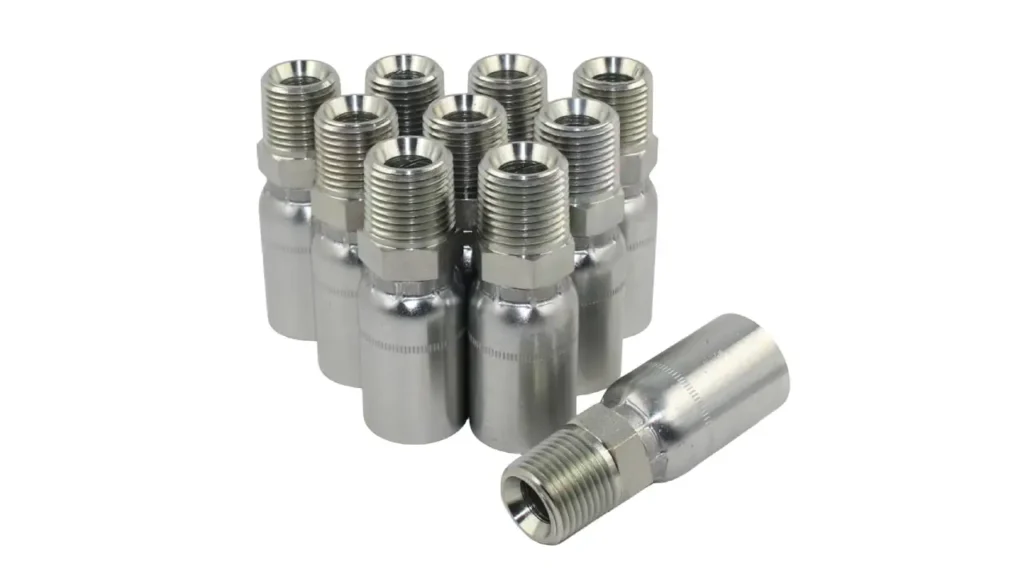
NPT, or National Pipe Tapered, hydraulic fittings are a widely recognized and utilized thread standard in North America, particularly for general-purpose fluid and gas transfer. Governed by ANSI/ASME B1.20.1, NPT fittings achieve a seal through the tapered design of their male and female threads. As the tapered male fitting is screwed into the tapered female port, the threads wedge together, creating a metal-to-metal interference fit.
Due to minute clearances that can create spiral leak paths, thread sealant (like PTFE tape or pipe dope) is typically required to ensure a leak-free connection, especially in hydraulic applications where pressure integrity is paramount. NPT fittings are found in various industries, including plumbing, manufacturing, and general hydraulics, offering versatility and broad availability.
JIC vs NPT Hydraulic Fittings
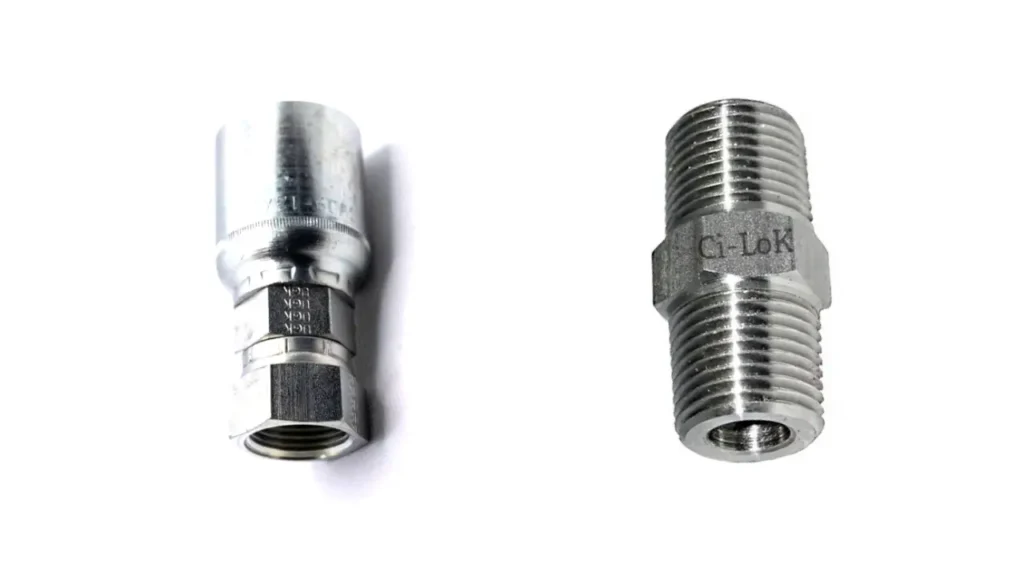
Choosing the correct hydraulic fitting type is crucial for the performance, safety, and longevity of any hydraulic system. Among the most common choices are JIC (Joint Industry Council) and NPT (National Pipe Tapered) fittings, each with distinct characteristics. Understanding their fundamental differences is essential for proper selection, installation, and maintenance, preventing leaks and ensuring system integrity.
Despite both being widely used for fluid conveyance, JIC and NPT fittings employ different sealing mechanisms, thread designs, and are suited for varying applications. This comparison will highlight the key distinctions to help you make informed decisions when working with hydraulic systems.
Sealing Mechanism
JIC hydraulic fittings create a seal through a metal-to-metal contact. The male JIC fitting has a 37-degree flare that mates with a corresponding 37-degree coned seat on the female fitting or flared tubing. As the connection is tightened, the metal surfaces are compressed against each other, forming a positive, leak-resistant seal without the need for additional sealants. This design is highly reliable and is not significantly affected by temperature fluctuations.
NPT hydraulic fittings, on the other hand, rely on a tapered thread design to create their seal. As the male NPT fitting is threaded into the female NPT port, the tapered threads wedge together, creating an interference fit. Due to inherent microscopic spiral leak paths that can exist between the threads, NPT connections typically require a thread sealant, such as PTFE tape or pipe dope, to ensure a truly leak-free connection. The seal is achieved through the deformation of the threads and the filling of gaps by the sealant.
Thread Design
JIC fittings utilize straight (parallel) threads, meaning the thread diameter remains consistent along the length of the threaded portion. These threads are primarily designed to draw the two halves of the fitting together and provide mechanical strength, allowing the 37-degree flare to create the seal. The straight threads also enable easy assembly and disassembly without damaging the sealing surface.
NPT fittings feature tapered threads, where the thread diameter gradually decreases along the length of the male thread and increases along the length of the female thread. This taper is integral to their sealing mechanism, as it causes the threads to wedge and bind when tightened. While the tapered design contributes to the seal, it also means that over-tightening can potentially deform or crack the port, and repeated assembly/disassembly can wear down the threads, reducing their sealing effectiveness.
Pressure Rating
JIC fittings are renowned for their robust performance in high-pressure hydraulic applications. Their metal-to-metal flare seal is highly durable and capable of withstanding significant pressures, often up to 10,000 PSI depending on the size and material. This makes them a preferred choice in demanding industrial, construction, and agricultural machinery where high fluid power is consistently present.
NPT fittings are generally more suited for lower to medium-pressure applications, although they can be found in some higher-pressure hydraulic systems. While they offer good mechanical strength, their tapered thread sealing mechanism, which relies on thread deformation and sealant, can be more susceptible to leaks at very high pressures or under conditions of significant vibration or thermal cycling. They are commonly used in pneumatic systems, general plumbing, and low-pressure fluid transfer.
Reusability
A significant advantage of JIC fittings is their reusability. Since the seal is created by the 37-degree flare and not by thread deformation, JIC fittings can be repeatedly disconnected and reconnected without compromising the integrity of the seal, provided the flared surfaces and threads are undamaged. This makes them ideal for systems requiring frequent maintenance, component changes, or troubleshooting, reducing replacement costs and downtime.
NPT fittings are generally not recommended for repeated reuse, especially in critical or high-pressure applications. The tapered thread design means that each time an NPT fitting is tightened, the threads deform slightly to create the seal. This deformation accumulates with each reuse, potentially leading to weakened threads, reduced sealing capability, and an increased likelihood of leaks. While minor reuse might be acceptable in low-pressure, non-critical applications with proper sealant application, it’s often safer to replace NPT fittings during significant maintenance.
Typical Applications
JIC hydraulic fittings are extensively used across various industries where high-pressure fluid power is critical. Their applications include heavy construction equipment, agricultural machinery, manufacturing automation, aerospace, and oil and gas industries. They are particularly favored for their reliability, ease of maintenance (due to reusability), and ability to withstand vibration and high pressures, making them a standard for hydraulic lines.
NPT hydraulic fittings are widely applied in general plumbing, industrial process lines, and pneumatic systems where the primary concern is creating a secure connection for conveying gases, water, or lower-pressure hydraulic fluids. They are common in air compressors, water pumps, and various stationary industrial equipment. While found in some hydraulic systems, they are typically chosen for their widespread availability and cost-effectiveness rather than their high-pressure sealing superiority compared to JIC or O-ring face seal fittings.
Here is a table showing you the differences between JIC hydraulic fittings and NPT hydraulic fittings.
| Feature | JIC Hydraulic Fittings | NPT Hydraulic Fittings |
|---|---|---|
| Sealing Mechanism | Metal-to-metal 37-degree flare seal | Tapered threads with reliance on thread sealant |
| Thread Design | Straight (parallel) threads | Tapered threads |
| Pressure Rating | Generally higher (up to 10,000 PSI) | Generally lower to medium pressure |
| Reusability | Highly reusable without compromising seal | Not recommended for repeated reuse (thread deformation) |
| Typical Applications | High-pressure hydraulics, construction, agriculture | General plumbing, pneumatics, lower-pressure hydraulics |
How to Choose the Different JIC and NPT Hydraulic Fittings?
Choosing between JIC and NPT hydraulic fittings is a critical decision that impacts the safety, reliability, and longevity of your hydraulic system. While both types are used for fluid conveyance, their distinct designs and sealing methods make them suitable for different applications. A careful assessment of your specific needs is necessary to make the right choice.
The selection process involves considering various factors related to the system’s operational demands, environmental conditions, and maintenance requirements. Mismatched fittings can lead to leaks, system inefficiency, and potentially dangerous failures, emphasizing the importance of informed decision-making.
Here’s how to choose between JIC and NPT hydraulic fittings:
System Pressure Requirements:JIC fittings are generally the preferred choice for high-pressure hydraulic applications. Their 37-degree metal-to-metal flare seal offers superior integrity under significant pressure, making them reliable in demanding industrial and mobile equipment.NPT fittings are typically better suited for lower to medium-pressure applications. While they can handle some hydraulic pressures, their tapered thread seal, which relies on deformation and thread sealant, is less robust for very high pressures or fluctuating pressure cycles.
Vibration and Dynamic Loads:JIC fittings excel in environments with high vibration and dynamic loads. The metal-to-metal flare provides a very secure and stable connection that resists loosening under movement, making them ideal for mobile machinery and equipment that experiences constant motion.NPT fittings are less ideal for applications with significant vibration. The reliance on thread deformation and sealant for the seal can be compromised by constant movement, potentially leading to loosening and leaks over time.
Ease of Assembly and Disassembly (Reusability):JIC fittings are highly reusable. Their straight threads and flare seal allow for repeated disconnection and reconnection without damaging the sealing surfaces, which is a major advantage for systems requiring frequent maintenance, component changes, or field repairs.NPT fittings are generally not designed for frequent reuse. Each time an NPT fitting is tightened, the threads deform slightly to create the seal. Repeated assembly and disassembly can wear down the threads, reducing their sealing effectiveness and increasing the likelihood of leaks.
Fluid Type and Contamination Risk:JIC fittings, with their metal-to-metal seal, generally have a lower risk of fluid contamination from sealants, as they often don’t require any. This is beneficial in sensitive hydraulic systems where fluid purity is paramount.NPT fittings always require thread sealant (tape or paste) to achieve a leak-free connection. There’s a slight risk that excess sealant can break off and enter the hydraulic fluid, potentially causing contamination or blockages in sensitive components like valves or pumps.
Existing System Compatibility and Regional Standards: Always check the existing fittings in your hydraulic system. Mixing JIC and NPT fittings, even if they appear similar, will lead to leaks and damage due to incompatible thread forms and sealing methods. JIC fittings are common in North American hydraulic equipment, while NPT is a general pipe standard.Consider regional standards and availability. JIC is an SAE standard widely adopted globally in hydraulics, while NPT is primarily a North American standard. If you are working on equipment from different regions, ensure you match the fitting type to the original design specification.
Conclusion
Understanding the distinctions between JIC and NPT hydraulic fittings is essential for any hydraulic system design, assembly, or maintenance. While both serve to connect components, their sealing mechanisms, thread designs, and typical applications differ significantly, making them non-interchangeable.
JIC fittings, with their 37-degree flare, create a metal-to-metal seal ideal for high-pressure applications where reliability and vibration resistance are critical. NPT fittings, conversely, rely on tapered threads and thread sealant for a leak-proof connection, typically suited for lower-pressure gas, air, and water systems.
For reliable performance and to avoid costly errors, always select the fitting type that perfectly matches your system’s design and operational demands. When you need a dependable source for wholesale hydraulic fittings, consider Kingdaflex for a wide range of quality products.




